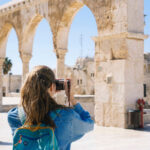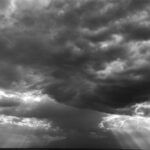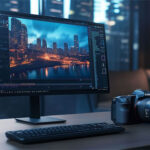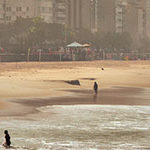The Weather Channel doesn’t only exist to tell you the temperature or which direction storm systems are moving; they have recently branched out into actual programming. Particular to today’s story, they have a new show called “Lava Chasers,” which documents scientists, researchers, and in this case, photographers who seek to study, capture, and understand the behavior of molten rock as it creeps slow and deadly down from the peaks of Hawaii’s famous volcanoes. In this short clip, a photographer identified only as “Bryan” tries to capture a timelapse of the oozing liquid earth, which is just as difficult as you might expect:
The video cuts unfortunately short, leaving us wondering what to take away from it. I guess that’s how they get us to watch the whole episode. We’ve identified the photographer as Bryan Lowry, an accomplished lava photographer whose portfolio can be seen here.
We see Lowry and his assistant, Robbie, struggling against the elements to get the shots they’re after. The focus, naturally, is on the weather (it is The Weather Channel), but there are many other things to consider when trying to photograph lava (yes, it is possible for any of us to go to on a volcano tour).
The lingering pace of lava flows have lured many unsuspecting admirers to disaster. It seems to move so gently, but its speed and direction can change in an instant, which can trap a person in an isolated area—a potentially fatal situation. The first thing to know about photographing lava is to use common sense and be very, very careful.
Cooled lava is essentially broken fragments of rock and is extremely sharp. Always wear sturdy, close-toed shoes. Make sure to bring gloves, and keep lots of water with you. Lava can reach up to 1200 degrees Celsius, and being near temperatures like that will suck moisture right out of you. The weather is extremely volatile in Hawaii, so come prepared for intense wind, rain, heat, and humidity. You’ll be arriving at the volcano by boat on a potentially violent sea, so if you get seasick, be ready for it.
It’s best to use a decent camera with a metal chassis and some weather sealing – something that will stand up to the harsh conditions. A high-quality tripod is important, too; the lava glows with red heat through its own ashy crust, which means that flash has little use in volcano photography, and thus you’ll likely be using entirely ambient light. As with most types of photography, the lighting will be best right after sunrise and right before sunset. Frozen action can certainly have its place, particularly when the lava is especially active and shooting sparks. Most of the time, though, a long exposure will do the best job, accentuating the flow’s motion and blurring it ever so slightly into a soft, brilliant stream. Pay special attention to the colors, and try to juxtapose the burning lava against the blue of the surrounding sea and sky for a photo that erupts with natural beauty.
Like This Article?
Don't Miss The Next One!
Join over 100,000 photographers of all experience levels who receive our free photography tips and articles to stay current:








Leave a Reply